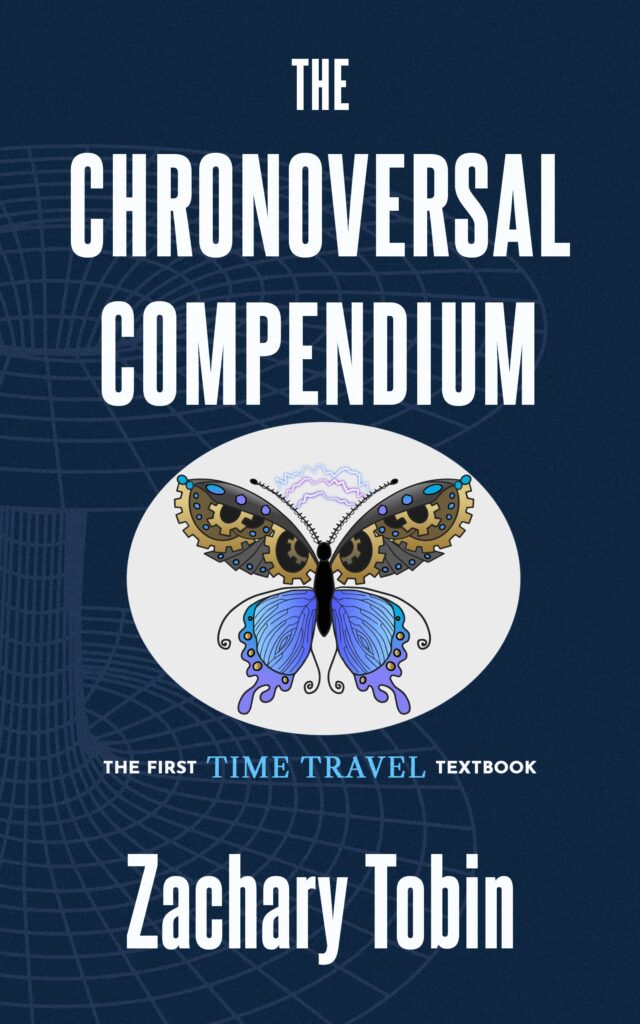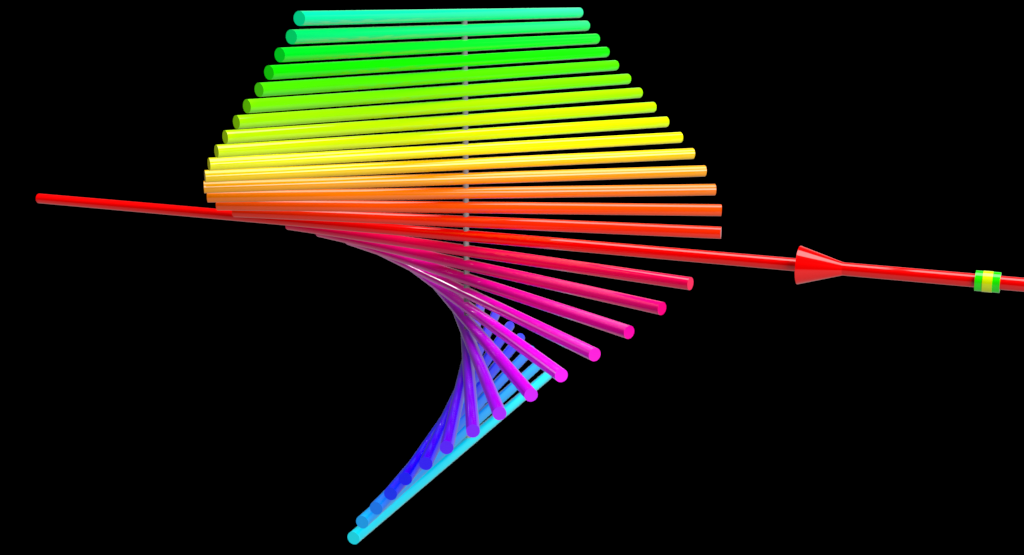The Most Comprehensive Codex of Chronodynamics Ever Conceived!
Available in eBook and paperback on Amazon and hardcover through IngramSpark!.
The Chronoversal Compendium is a detailed technical analysis of all the ways time travel could work, and even the ways it couldn’t. It is a textbook that starts with various assumptions about time travel and then investigates their ramifications as scientifically as possible. It could serve as a guide for sci-fi authors who want to make a detailed and consistent universe where time travel exists, as well as for fans who want to understand time travel stories better. It could even be used as a starting point for scientists if time travel is actually shown to be real.

Overview
Modern theories generally suggest the past cannot be changed even if we could go back in time, but counter theories exist that contradict that, too. Interpreting them is its own exercise in parsing jargon from quantum mechanics and cosmology. If one doesn’t wish to be constrained by the minutiae of modern physics, as is often the case in science fiction, there are scarcely any resources for understanding time travel at all.
The Chronoversal Compendium: A Time Travel Textbook is the first ever endeavor to analyze and compile all the possible mechanics of time travel. In it, I look at the various assumptions we might make about time travel–e.g., “the past can be changed”, “changing the past could make you fade from existence”, or “there are other timelines”–and examines in detail what each of these assumptions would mean for the rules of the universe.
Hard science fiction is often built on “one big lie,” where a single fictional concept is incorporated into the mundane world, and its consequences play out as a result of its inclusion. Much like a scientific theory, the results are based as much on currently known science as possible. Since most forms of time travel are beyond the bounds of modern physics, its analysis requires a certain level of flexibility. It straddles the line between speculative science and fictional science.
The models presented in the Compendium are based on modern theories of physics as much as possible. Chaos theory, general relativity, and quantum mechanics are all incorporated into this analysis as closely as they can be. The existence of time travel is consistent with some models of general relativity, but its practice is still purely fictional. We could optimistically say that this doesn’t necessarily mean that time travel can’t ever truly exist, and should it be fully realized, this text could provide insight into what the discovery means. The research for the Compendium combines the bleeding edge research of renowned physicists with the narratives of over a hundred titles in science fiction and fantasy.
Chapter Outline
Part 1. Requisite Physics
The first part of this book covers all the real-world scientific concepts related to time travel, including relativity, chaos theory, and quantum mechanics. It clarifies various points involved in tying these concepts to time travel. This serves two primary purposes: To provide all the necessary background information so that you can understand what comes later, and to clear up any misconceptions to ensure we are all using the same jargon, definitions, and baseline ideas.
Chapter 1. The Basics
The first chapter covers basic scientific ideas, such as time and scientific units.
Chapter 2. Randomness: Chaos & Quantum
Chapter 2 covers ideas of determinism and randomness. Chaos deals with things that seem random but are actually based on cause and effect. Quantum mechanics introduces true randomness as well as some specific ideas that show up in time travel, such as branching universes and antimatter.
Chapter 3. Relativity
Relativity informs our real-world theories of time travel. Objects that move near the speed of light or have extremely high densities can change the flow of time, giving us a scientific basis for time travel.
Part 2. Temporal Mechanics
Part 2 contains the bulk of the information and analysis. It examines all the various ways that time travel could pan out. While Part 1 is based squarely in existing scientific knowledge, Part 2 ventures into unknown and unestablished territory.
Chapter 4. Principles of Time Travel
This chapter clarifies what “time travel” means. It examines all the different ideas that might constitute time travel and describes all the assumptions we make about it—concepts such as “the past is immutable” or “there is a multiverse”—so that their ramifications can be explored further in Part 2. It further establishes baseline time travel jargon that is used throughout the text.
Chapter 5. Chronoportation: Achieving Time Travel
Chapter 5 deals with the act of moving through time. This chapter examines how time travel may be achieved, as well as the effects of time travel on the time traveler. Here, we enumerate the various methods of traveling through time, which will inform our analysis in future chapters.
Chapter 6. Single Timeline
Chapter 6 begins our analysis of chronotopology, the “shape” of time, and how the universe reacts to time travel. This is where we start to take the assumptions from Chapter 4 and work them out to see what the effects of each of these assumptions mean. In this chapter, we look at basic time travel on a single timeline and some more advanced temporal behavior involving individual timelines.
Chapter 7. Branching Timeline
Chapter 7 looks at the behavior of branching timelines, where time travel causes the timeline to split, with a new branch forming from the original timeline.
Chapter 8. Preexisting Multiverse
Chapter 8 looks at preexisting multiverses, where every timeline already exists in parallel. Instead of branching, time travel crosses from one universe to the next.
Chapter 9. Spectral Multiverse
Chapter 9 looks at more complex preexisting multiverses, where infinite universes form adjacent to each other across dimensions.
Chapter 10. Paraphysical Topology
Chapter 10 looks at timelines that have their own rules but don’t adhere to our more strict understanding of physics. Spacetime is a much more malleable concept in paraphysical timelines.
Chapter 11. Parachronics & Paraphysics
Chapter 11 examines common time travel concepts that don’t fit as squarely into the preceding chapters. We look at temporal phenomena related to time travel and phenomena not based on real physics.
Part 3. Discussion
In Part 3, we discuss concepts not covered in Part 2. We will attempt to wrap up all the preceding information into a comprehensible conclusion.
Chapter 12. Practical Advice for Time Travelers
This chapter takes a look at planning for time travel from the perspective of the traveler. In it, we discuss issues that might arise and give useful advice for traveling through time.
Chapter 13. Miscellaneous
This chapter looks at considerations associated with time travel not covered in previous chapters. Such topics include ethics, unexpected consequences of scientific phenomena, and advice for authors writing about time travel.
Chapter 14. Case Studies from Existing Stories
The final chapter applies all the preceding information to existing stories about time travel. The Terminator, Predestination, Back to the Future, and Avengers: Endgame are examined in detail, showing how their narratives could fit into technically consistent models.


